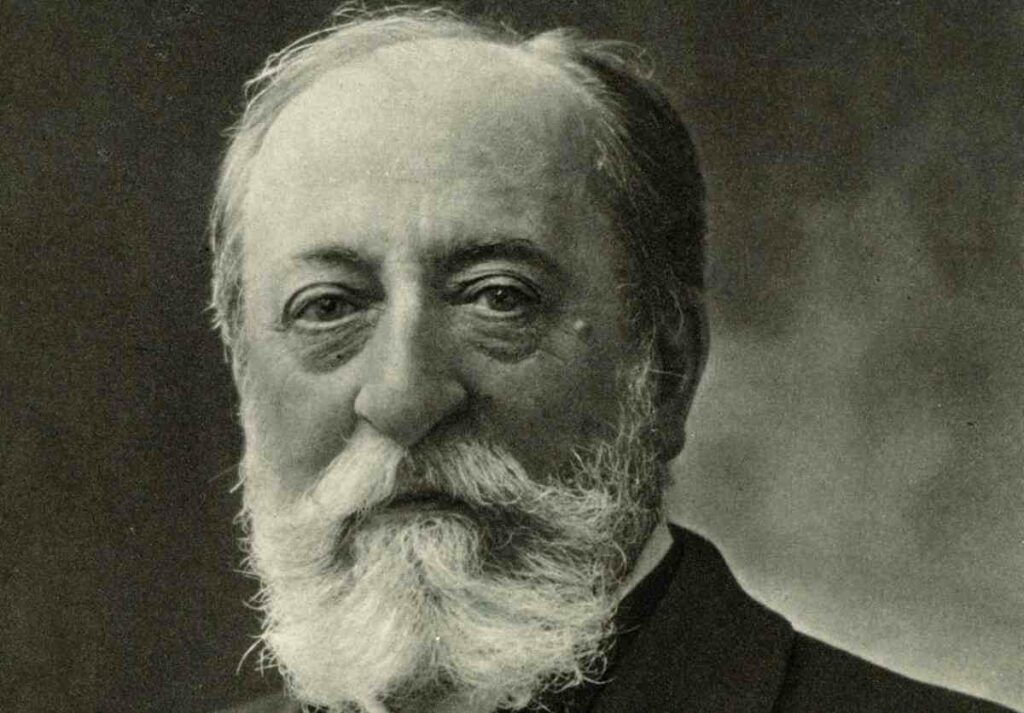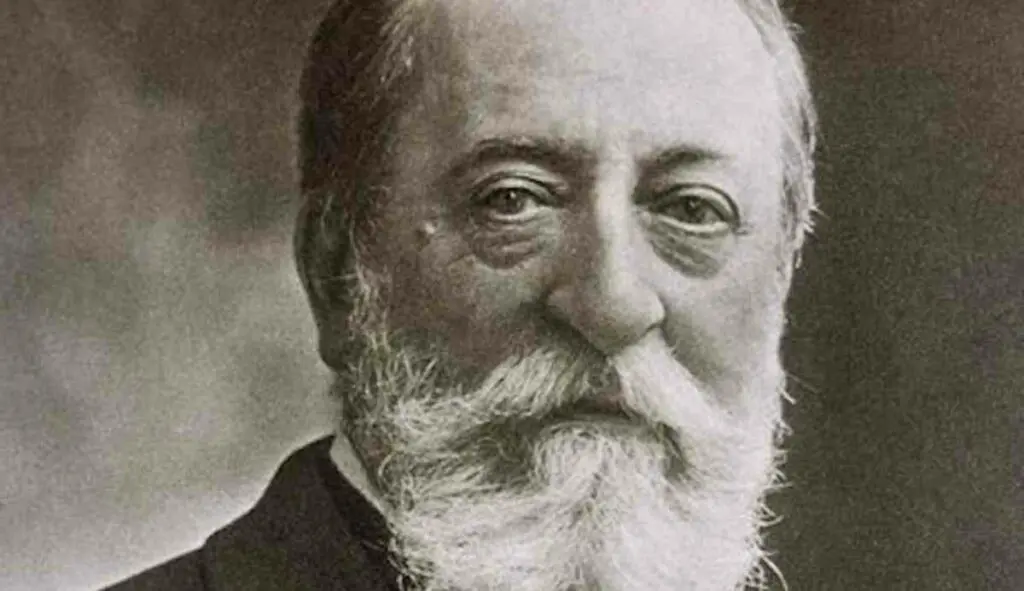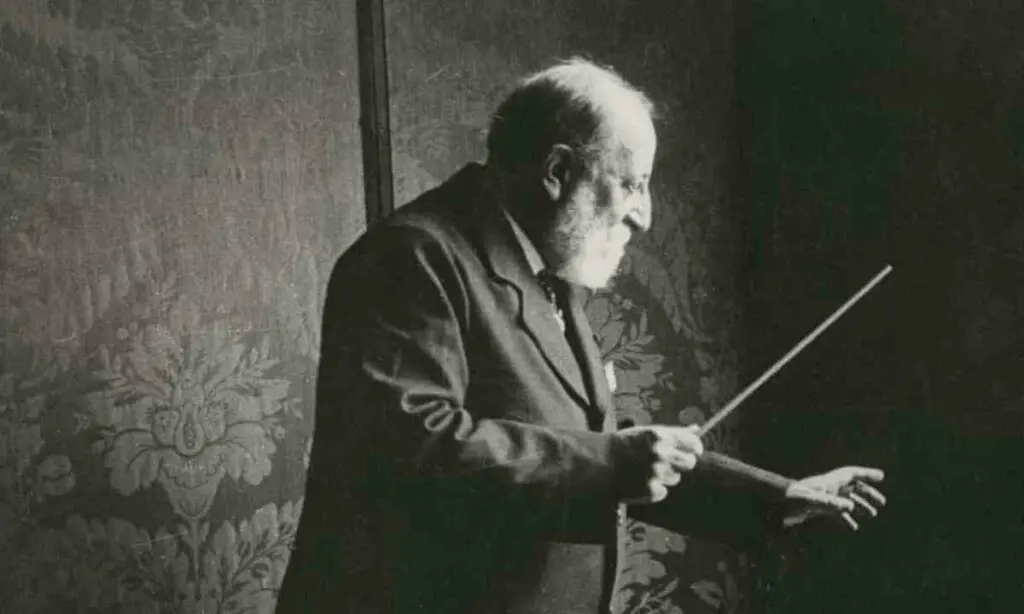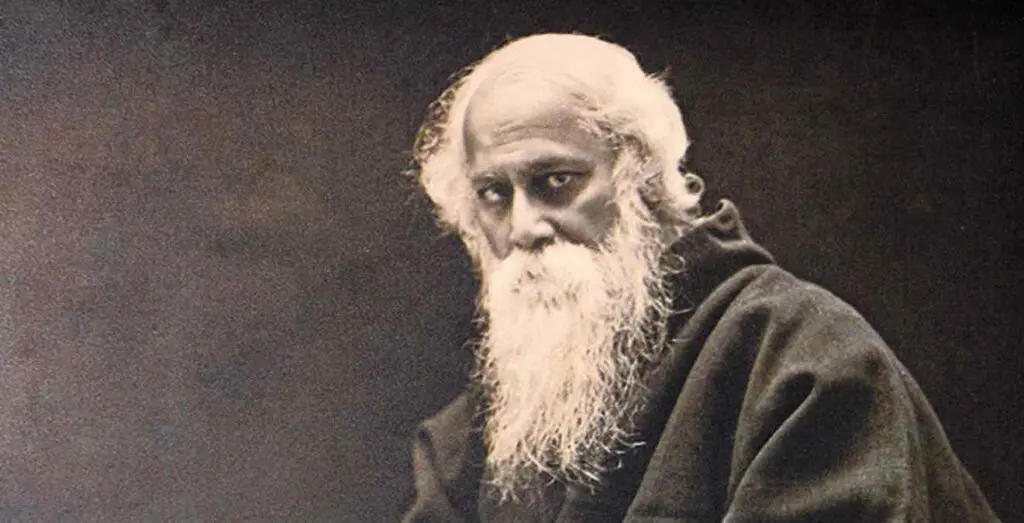Honored musician and composer Camille Saint-Saëns has contributed to the cultural development of his native country. The work "Carnival of Animals" is perhaps the most recognizable work of the maestro. Considering this work a musical joke, the composer forbade the publication of an instrumental piece during his lifetime. He did not want to drag the train of a "frivolous" musician behind him.

Childhood and youth Camille Saint-Saens
He was born in the heart of France - Paris, on December 9, 1835. Previously, it was customary not to stop at one child, but despite this, the Minister of the Interior and an ordinary housewife limited themselves to only a son, who was named Camille. The mother managed to raise her offspring in the right traditions - the boy was smart and developed beyond his years.
When Camille was very young, his father died. He was forced to move to Corbeil. From that time on, the nanny was engaged in raising the boy. The mother was responsible for providing for her son.
When Camille returned to Paris, he was placed in the care of his grandmother. By the way, it was she who first recognized the boy's musical abilities. Grandmother taught Camille to play the piano.
At the age of seven, the boy was educated by a composer named Camille Stamati. He managed to develop the flexibility of the hands and the dexterity of the fingers in the boy. He honed his piano skills almost to a professional level.
The young musician held his first concerts at the age of five. Already in the mid-40s, Camille performed at a large venue. He lit up on the Salle Pleyel stage. The musician helped the audience enjoy the immortal works of such classics as Mozart and Beethoven.
Soon he got to study with the composer Pierre Maledan. The young man sought to get a musical education. At the end of the 40s, Camille entered the local conservatory. His musical education was handled by François Benois and Fromental Halévy.
He proved himself to be a capable student. Camille was interested not only in music, but also in philosophy, archeology, and astronomy. By the way, throughout his life he was interested in the discoveries and news of the above sciences.
Soon the young composer presented several works to classical music fans. We are talking about the works "Symphony in A Major", as well as the choral piece "Jinns". In the early 50s, he won the first prize at one of the music competitions.

The creative path of the composer Camille Saint-Saens
After receiving a musical education, he entered the church, as an organist. The new work brought the musician a good income, but most importantly, he really enjoyed playing in the church. The only thing that did not suit Kamil was the musical instrument on which he was forced to play.
The work did not take much time from the musician, so he had the opportunity to create. He produced several compositions in the musical world that impressed popular French composers. When Camille went to work in the imperial church, he received admiration from F. Liszt himself.
Unlike most composers of the time, he did not imitate Schumann and Wagner. He managed to maintain his own individuality. Soon the presentation of the musical composition "Symphony No. 1" and the work "City of Rome" took place. Alas, they did not bring the maestro due popularity and remained practically unattended by the public.
Work on the instrumental piece "Carnival of the Animals"
In the 60s, he became a teacher at the Niedermeier music school. Kamil went against the system - he managed to include musical works by contemporary composers into the program. He set about writing a musical farce intended for students to play. Camille does not even realize that the "Carnival of the Animals" will become his hallmark in the future.
Occupying the post of teacher, he practically does not pay attention to writing. In the mid-60s, when Camille decided to leave the music school, he came to grips with writing compositions. During this period of time, he presents the cantata "Les noces de Prométhée".
At the end of the 60s, the premiere of the maestro's debut orchestral work took place. We are talking about the composition "Piano Concerto No. 2 in G minor". At this time, the composer temporarily resides in England. In order to somehow get money for existence, he is forced to organize musical performances.
When he returned to his homeland, he organized a creative society. The purpose of the association is to popularize modern French music. Soon the maestro presented the symphonic poem "Omphala's Spinning Wheel". The work was warmly received not only by ordinary admirers of classical music, but also by authoritative composers.
At the beginning of the new century, the maestro changed his own tastes. He radically changed the attitude towards modern works. Camille moved away from the fashionable sound, returning to the good old classical tradition. The realization that modern motifs are a little crazy came to him after he visited the play "The Rite of Spring".

Premiere of the opera "Henry VIII"
Until a certain time, there was an opinion that Camille was not able to write great works. Operas and, however, were given to the maestro incredibly difficult. The situation changed after he set about writing a musical composition about the bloody English king. He managed the impossible - he perfectly conveyed the mood that reigned during the Renaissance. The work "Henry VIII" aroused genuine interest among Camille's contemporaries. The talent of the composer was accepted at the highest level.
In England, Camille was included in the list of one of the most talented composers in France. Some time later, the leadership of the London Philharmonic ordered a musical composition from the maestro. He gladly accepted the order. Soon the presentation of the "Organ Symphony No. 3 in C Minor" took place. After a successful premiere in England, recognition fell upon the composer. The presented work tops the list of Camille's most popular works.
At the same time, work was completed on the play Carnival of the Animals, which the maestro began composing while still teaching at a music school. The suite was published after Camille's death, because he considered this composition "ridiculous and frivolous."
At the beginning of the new century, he toured extensively in his native France. Especially for the choral fest, he wrote the oratorio "Promised Land". During the premiere of a piece of music, he personally took the conductor's stand. In the last years of his life, his concerts were held not only in France, but also in the United States of America.
Details of the personal life of Maestro Camille Saint-Saens
Camille could not establish a personal life for a long time. Until a certain time, he lived with his mother in her apartment. In 1875, he finally matured and married Marie-Laure Truff.
After some time, the woman bore him two children, but they died in infancy. The eldest son fell out of the window and crashed to his death, and the youngest died of pneumonia.
Camille was distressed and depressed because of the events that took his children from him. After that, the couple lived under the same roof for another three years. Once during a family holiday in another country, Camille left the hotel and never returned. He left a note to his wife stating that everything was over between them. He blamed his wife for the death of his first child. Camille could not forgive a woman for a mistake that cost the death of her firstborn.
For more than 10 years, the maestro lived with his elderly mother. When the composer's mother died, the darkest times came in his biography. He became depressed and considered voluntarily leaving this life.
Camille decided to change the situation. For some time he moved to Algiers. In 1900 he finally settled in Paris. The maestro rented an apartment, which was located near the house of his deceased mother, and spent the rest of his days there.
Death of Camille Saint-Saens
At the end of the 21st year of the last century, he went to Algiers to spend the winter. He died on December 16, 1921. Information about the composer's death shocked Camille's friends. He looked absolutely healthy and did not complain of feeling unwell. A heart attack caused the sudden death of the maestro. The composer was buried in Paris.



